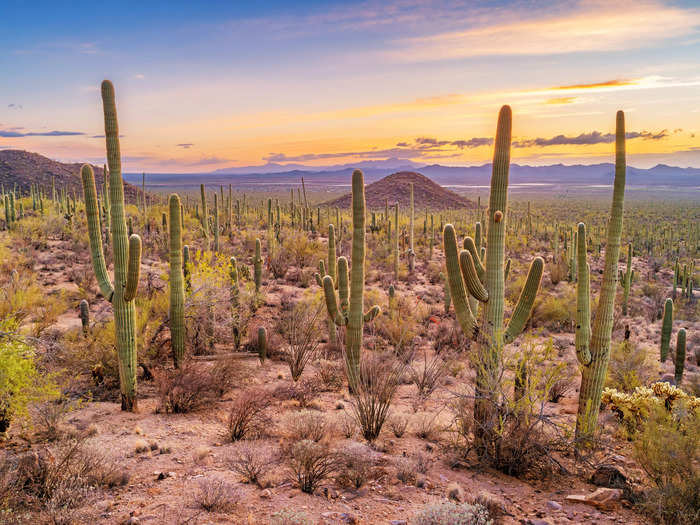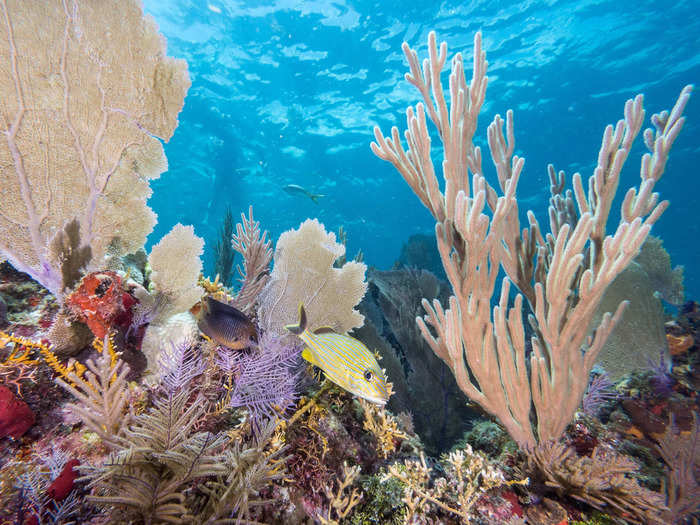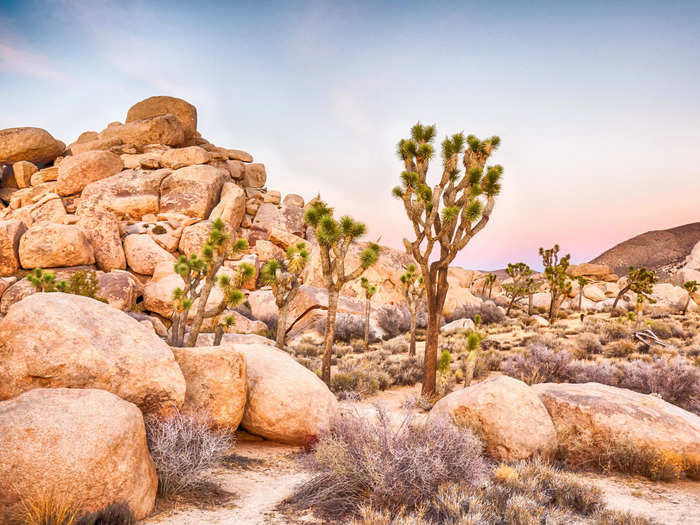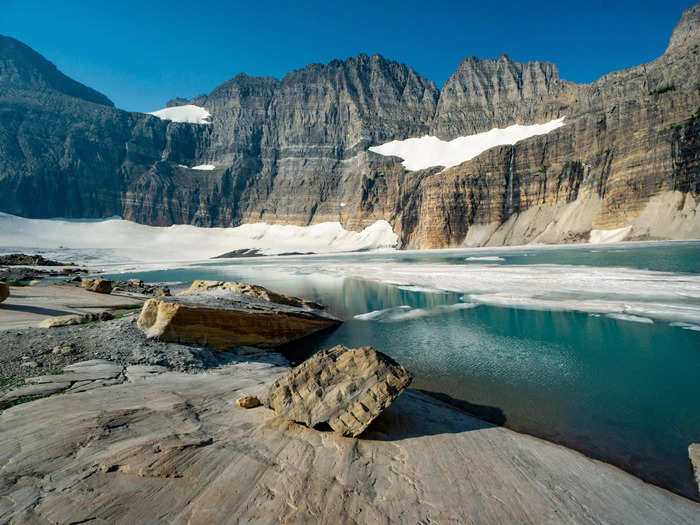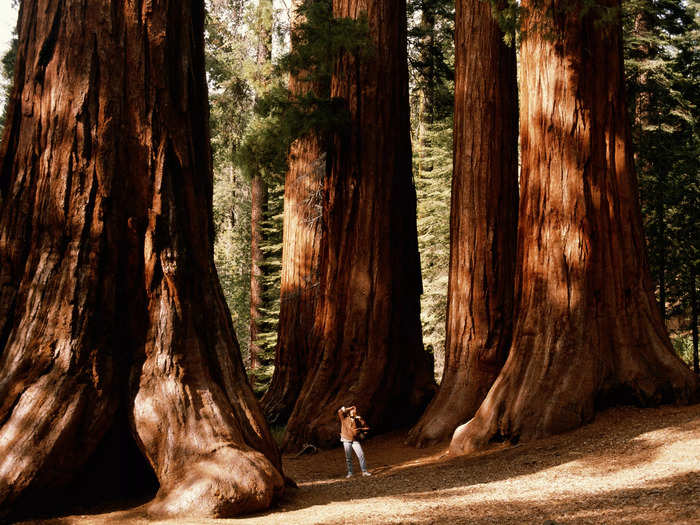Extreme heat and wildfires are threatening natural wonders in the US.Brent Durand/Getty Images; Marcio Jose Sanchez, File/Associated Press; Marli Miller/UCG/Universal Images Group via Getty Images
- Extreme heat and wildfires this summer have killed some of America's natural wonders.
- From bleached coral to sagging cacti, the issues could worsen if heat and drought persist.
This summer's record-breaking heat has brought environmental consequences across the US, from coral bleaching in Florida to cacti toppling over in Arizona.
But the events are part of a larger trend of natural wonders that are declining or even at risk of disappearing in light of a changing climate that is bringing more heatwaves, drought, and wildfires.
Some natural wonders of the US are in more danger of extinction than others, but all those listed below are threatened, and without any intervention, could disappear. Thankfully, many are protected and can still be visited responsibly.
Here are five natural wonders in the contiguous US that you should see while we still have them.
Saguaro cacti in Arizona
Saguaro cactus forest in Saguaro National Park, Arizona. benedek/Getty Images
The saguaro cactus is an icon of the American west, but this summer's heat wave has shown what might happen to them if temperatures continue to rise and drought conditions persist.
Saguaros in Arizona have been collapsing and dying this summer in the record-breaking heat. The cacti, which usually grow to 40 feet tall and live for over 150 years, evolved to withstand hot temperatures, but prolonged heat and lack of water can kill them.
Scientists are unclear what the long-term impacts of the recent heatwave will be on the saguaros, but say that if drought continues in Arizona mortality rates could rise further in the future.
The saguaro cactus grows only in the Sonoran Desert, primarily in the areas that cover southern Arizona and part of northwestern Mexico. Saguaro National Park, located northwest of Tucson, is an excellent place to see the long-living, towering cacti.
Coral reefs in Florida
A thriving underwater reef scene off the coast of Key Largo, Florida. Brent Durand/Getty Images
Researchers in south Florida have been working to save coral reefs this summer as high temperatures have left the ocean water so hot it feels like syrup. Scientists have even been removing some coral species from the ocean and placing them into tanks on land in a desperate attempt to save them.
Still, large swaths of reef have experienced bleaching or have died entirely. But the problem goes beyond this summer's heatwave. Since the late 1970s, healthy coral cover in the Florida Keys has fallen by 90%, according to NOAA.
Florida's reef system, spanning some 350 miles, is the only living coral barrier reef in the continental US. Snorkeling or scuba diving in the Florida Keys National Marine Sanctuary is a great way to see the reefs up close.
Joshua trees in California
Joshua Trees near boulders in Joshua Tree National Park, California. Peter Unger/Getty Images
This summer has already brought trouble for southern California's Joshua trees, the spiky, twisty, Dr. Seuss-like desert plants that can live for 150 years.
The York Fire, the largest wildfire in the state so far this year, spread through groves of Joshua trees in the Mojave Desert as of last week. Cody Hanford, executive director of the Mojave Desert Land Trust, told CNN that millions of Joshua trees may have been impacted.
Joshua trees primarily grow in the Mojave Desert. The Mojave National Preserve has experienced an increase in fire frequency over the past decade, according to Inciweb, an inter-agency fire information system. Fire officials said the Joshua trees and other desert plants are not well adapted to the fires.
One of the best places to see the beloved plants is at the park named for them: Joshua Tree National Park, located around 130 miles east of Los Angeles.
Glaciers in Montana or Washington
Glacial striations and receding Grinnell and Salamander glaciers in Glacier National Park, Montana. Marli Miller/UCG/Universal Images Group via Getty Images
The highest concentrations of glaciers in the US can be found in North Cascades National Park in Washington and Glacier National Park in Montana.
A glacier is a body of ice that is so large it is constantly moving under its own weight. In both national parks, they are disappearing. Between 1966 and 2015, every glacier in Glacier National Park shrunk, some by over 80%, and many have already disappeared. Glaciers in the North Cascades and other national parks in the Pacific Northwest have also been retreating rapidly.
The National Park Service says efforts to slow global warming may not be enough to save Glacier National Park's glaciers, but it's unclear exactly how much time they have left.
You can view glaciers at Glacier National Park at locations identified by the park service. And it's actually even easier to see glaciers at North Cascades, 100 miles northeast of Seattle.
Giant sequoias in California
Woman standing amongst giant sequoias in California. Getty Images
Giant sequoias, the largest trees in the world, grow only on the western slopes of California's Sierra Nevada mountains. Some sequoias surpass 300 feet in height and have diameters greater than 30 feet. They can also live for more than 3,000 years.
But the giants are at risk, with only 73 giant sequoia groves remaining in the Sierras. Destruction of the trees as well as the climate crisis and wildfires have taken their toll.
"We have reached a tipping point — lack of frequent fire for the past century in most groves, combined with the impacts of a warming climate — have made some wildfires much more deadly for sequoias," according to the National Park Service.
Six fires that occurred between 2015 and 2021 burned 85% of all giant sequoia grove acreage, resulting in unprecedented losses. In 2020, a single wildfire killed as many as 10,600 sequoias — or 14% of the entire population.
You can still walk among the sequoias, many of which have stood since the fall of the Roman Empire, by visiting the park named for them, Sequoia National Park, and its neighbor, Kings Canyon National Park, about 200 miles north of Los Angeles.

